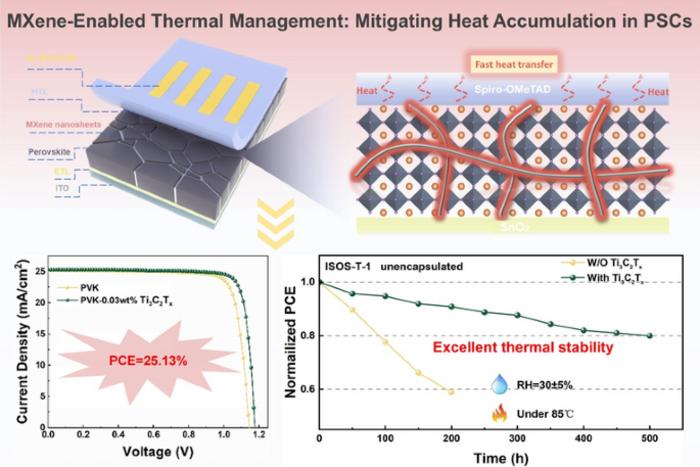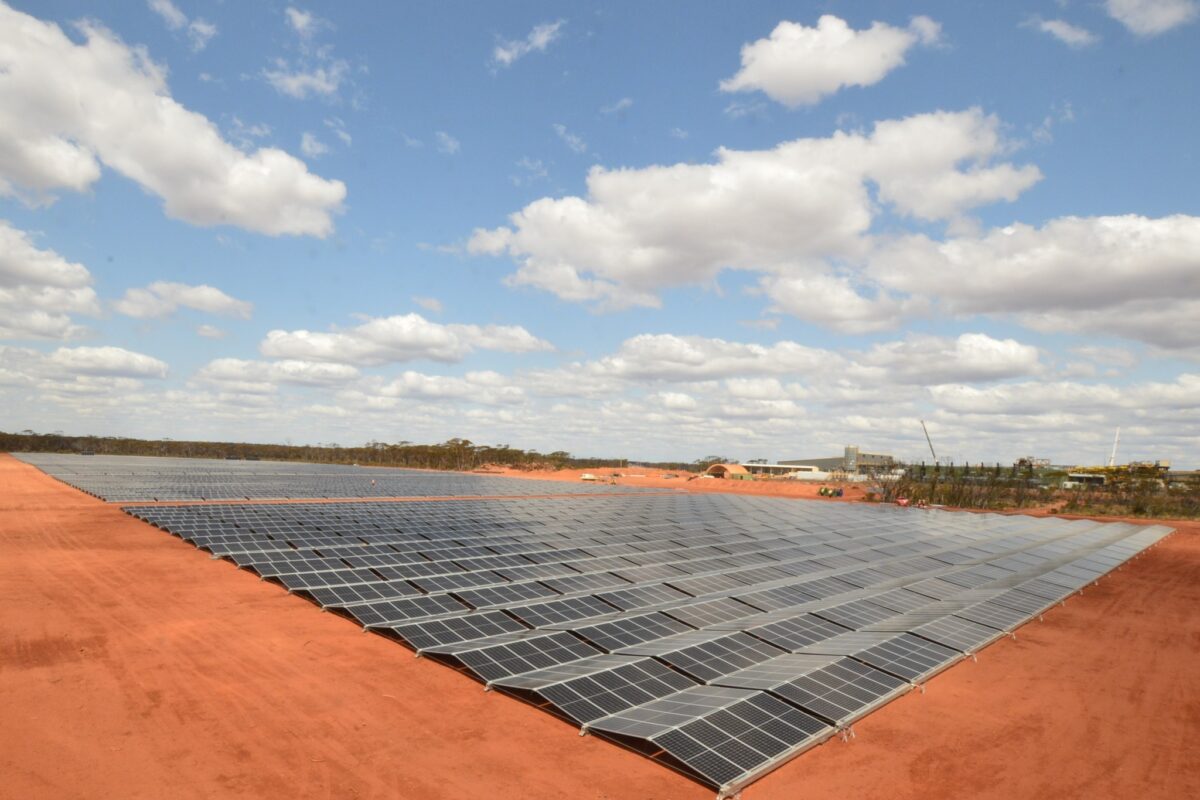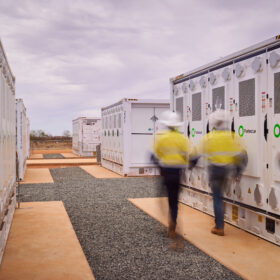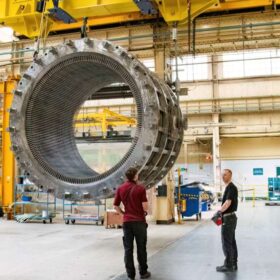Researchers from the University of Electronic Science and Technology of China (UESTC) have fabricated a perovskite solar cell based on a light absorber incorporating two-dimensional titanium carbide (Ti3C2Tx), which is also known as MXene.
MXene compounds take their name from their graphene-like morphology and are made via selective etching of certain atomic layers from a bulk crystal known as MAX. Recently, these materials have shown promise for use in PV technology due to their unique optoelectronic properties, such as their large charge carrier mobility, excellent metallic conductivity, high optical transmittance, and tunable work function (WF).
“These multifunctional advantages highlight the great potential of Ti3C2TX for constructing perovskite solar cells with not only high power conversion efficiency but also excellent thermal stability,” the scientists said, noting that when Ti3C2TX nanosheets are embedded in the perovskite layer, they serve as multifunctional additives to simultaneously enhance heat dissipation and optoelectronic properties.
The cell was built with a substrate made of glass and indium tin oxide (ITO), an electron transport layer (ETL) based on tin oxide (SnO2), the perovskite absorber incorporating Ti3C2Tx, a hole transport layer (HTL) relying on Spiro-OMeTAD, and a gold (Au) metal contact.
Thanks to the incorporation of Ti3C2Tx, the perovskite film was built with a thickness of just 15.2 nm, which compares to 24.9 nm for a perovskite film without the Ti3C2Tx treatment. This translated to an improved morphology and surface smoothness in the absorber, which in turn resulted in the formation of efficient heat conduction pathways.
“This improvement in morphology can be attributed to the excellent heat transfer ability of Ti3C2TX, which provides a stable thermal field for uniform grain growth, thereby enlarging the grain size,” the researchers said. “The Ti3C2TX-modified perovskite film displayed stronger absorption in the visible light region compared to control films.”
Through energy-dispersive spectroscopy (EDS), the research team verified that the Ti was uniformly distributed throughout the perovskite film, which this way can act as a heat conduction pathway and defect passivator at grain boundaries. X-ray Photoelectron Spectroscopy (XPS) also confirmed that Ti3C2TX contributes to the local redistribution of electrons at grain boundaries of the perovskite absorber.
Tested under standard illumination conditions, the solar cell achieved a power conversion efficiency of 25.13%, an open-circuit voltage of 1.177 V, a short-circuit current density of 25.29 mA cm2, and a fill factor of 84.4%, while a reference solar cell without Mxene nanosheets achieved values of 23.70%, 1.145 V, 25.18 mA cm2, and 82.2%, respectively.
Furthermore, the Mnexe-based device was found to retain approximately 80% of its original efficiency after 500 h at 85% relative humidity.
The scientists specified that the main hurdle for the commercialization of this type of solar cells remains the high cost and complexity of Ti3C2TX materials. “Future studies should focus on optimizing the synthesis routes to reduce cost and improve reproducibility. Moreover, alternative MXene materials with unique structures and electronic properties, such as Ti2CTX, for thermal management of perovskite solar cells may provide comparable or even superior performance,” they concluded.
The cell was described in “Multifunctional MXene for Thermal Management in Perovskite Solar Cells,” published in Macro-Micro Letters.
Previous attempts to use Mxene in perovskite solar cells resulted in devices with 23% efficiency and cells with 17% efficiency. Separately, another international research group recently conducted a review to find out how MXenes could be used as materials for solar cells.
This content is protected by copyright and may not be reused. If you want to cooperate with us and would like to reuse some of our content, please contact: editors@pv-magazine.com.









By submitting this form you agree to pv magazine using your data for the purposes of publishing your comment.
Your personal data will only be disclosed or otherwise transmitted to third parties for the purposes of spam filtering or if this is necessary for technical maintenance of the website. Any other transfer to third parties will not take place unless this is justified on the basis of applicable data protection regulations or if pv magazine is legally obliged to do so.
You may revoke this consent at any time with effect for the future, in which case your personal data will be deleted immediately. Otherwise, your data will be deleted if pv magazine has processed your request or the purpose of data storage is fulfilled.
Further information on data privacy can be found in our Data Protection Policy.